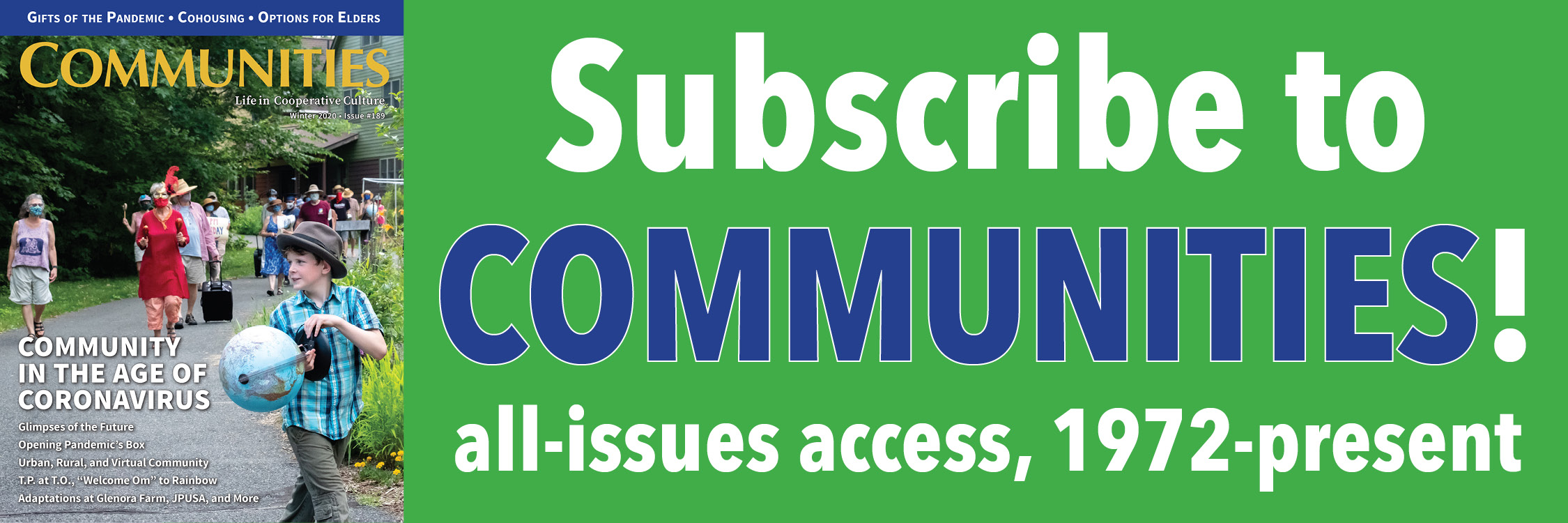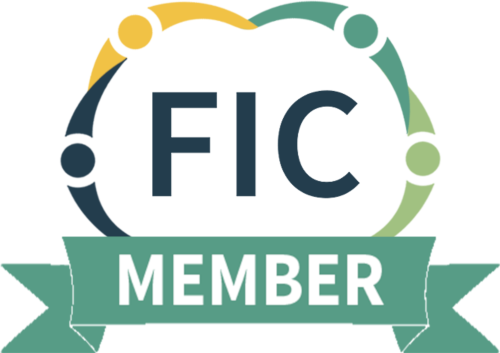In the summer of 1927, a mile-long steel bridge was opened spanning the Niagara River, connecting Buffalo, New York and Fort Erie, Ontario—about 20 klicks upriver from Niagara Falls. Commemorating the achievement of 100 years of (mostly) cordial relationships between the US and Canada, this structure was dubbed the Peace Bridge.
Building on that heritage 86 years later, I’m writing to celebrate a new partnership between the Foundation for Intentional Community (the US-based publishers of this magazine) and the Tamarack Institute (dedicated to eliminating poverty in Canada). Think of it as a virtual peace bridge.
Our partnership with the Tamarack Institute started with a couple of phones calls in the spring of 2012, and ultimately led to their sponsorship of the Summer 2013 issue of Communities (#159), on the theme of Community Wisdom for Everyday Life. It was a good fit for Tamarack because they’ve come to appreciate that you cannot end poverty without the engagement of healthy communities, and a central part of Communities’ editorial mission is chronicling what is being learned about how to build and sustain vibrant communities. (It’s not accidental that the subtitle on our masthead is Life in Cooperative Culture.)
It was a good fit for FIC because part of our mission (since 2005) has been Creating Community Where You Are, taking what is being learned in the crucible of residential intentional community about how groups can function well, and making that available to the widest possible audience. We realize that the number of people hungry for more community in their life—a greater sense of connection, safety, and belonging—is vastly larger than the number of people interested in jointly owning property with others to create intentional communities.
As a lever for social change, the impact of the intentional communities movement will not be so much about how many people live in them, as how many people are able to lead better, more connected lives inspired by what intentional communities have pioneered about sharing and manifesting a high-quality life that isn’t founded on the bedrock of material acquisition (he who has the most toys wins).
1,000 Conversations of Light
In pursuit of its mission to end poverty, Tamarack has conceived of a national effort to promote community. They reason that if they can advance caring about one’s neighbors, that’s the key to gaining a purchase on eradicating poverty. In line with that they have launched a three-year Seeking Community campaign to host 1,000 conversations across Canada on the topic, “What are we learning about being in community?”* Think of it as dialog about how to move toward the light of cooperation, and away from the darkness of isolation and alienation.
The point of these conversations will be to enjoy each other, to care for one another, and to work together for a better world. To the extent possible Tamarack will record the conversations and make them available at seekingcommunity.ca. As the results come in, they will sift through the recordings to identify themes and lessons that can be distilled into guidance about what people want and what’s been successful in manifesting it. The concept that undergirds this initiative is the radical notion that people already know what they want, leaders just have to pay attention and help midwife its arrival. Community, after all, is something we do together, not something we do to or for others.
Inspired by the synergy of our collaboration on the Summer 2013 issue, Tamarack and FIC have decided to double down and do a second joint issue next year. On Tamarack’s part they’ll help put together a set of articles for our Fall 2014 issue based on what emerges from the recorded conversations.
On the Fellowship’s part, we’re inviting you, our readers, to join the party and host conversations as well (it doesn’t matter whether you’re Canadian, eh; everyone needs community). If you’re inspired to play along at home—and we hope you are—ask friends and neighbors (which, by the way, are not meant to be mutually exclusive groups) to join you for an afternoon or evening of conversation about community.
Here is a template of questions to consider posing (feel free to use whichever of these inspire you, or to make up your own—this is a participatory sport, not a test to see how well you can follow instructions):
After introductions you might ask:
—What has been a memorable experience of community in your life?
—What does community mean to you?
—Why is community important to you now?
—Where do you experience community today?
—If you’ve ever had a negative experience of community, please describe it.
—What would deepening your experience of community look like?
Toward the end of the gathering, you might ask:
—What did you hear today that stood out for you?
—What were the new ideas or perspectives that you heard?
—What ideas and feelings resonated with the whole group; what themes emerged from the conversation?
—Are you interested in continuing this exploration of community?
—Are they any specific actions you’re inspired to take based on what happened in this conversation?
If you can swing it, we encourage you to record your session and send the results to Tamarack. Contact
Rachel Brnjas at rachel@tamarackcommunity.ca for help in getting this done. Who knows, maybe you’ll see something from your group quoted in Communities a year from now.
While it’s rare for a single voice to be strong enough to change the world, I believe that collectively our voices will be substantial enough to bridge from where we are today, all the way to Peace.





















